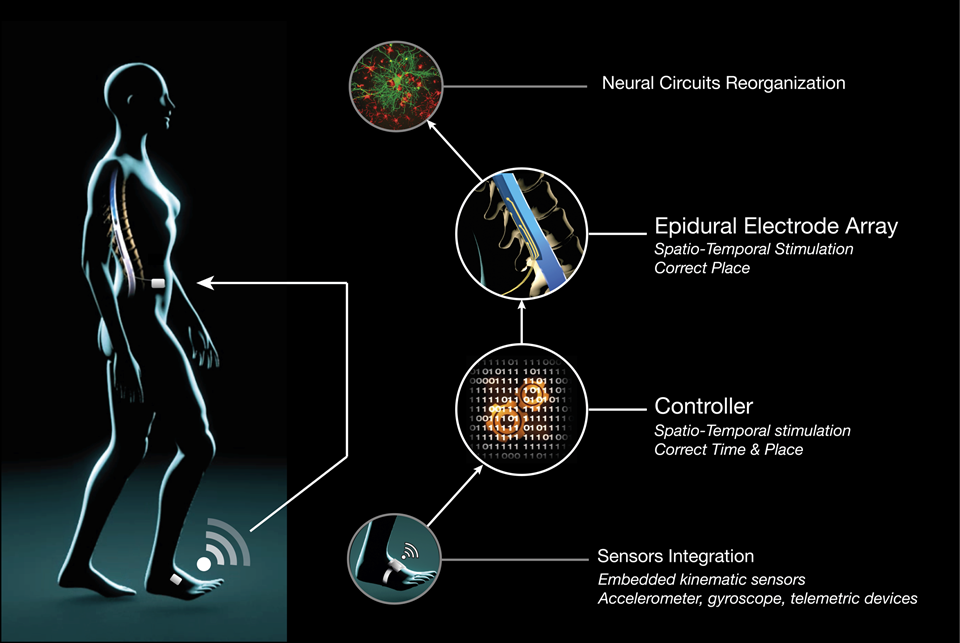Neuromodulation strategies for Spinal Cord Injury
In collaboration with GTX Medical and the laboratory of Prof. Courtine.
Spinal cord injury (SCI) disrupts communication within the nervous system, leading to the loss of essential neurological functions. At present, activity-based therapies are the only medical practices that can be used to enhance recovery. The volitional production of active movements during training promotes reorganization of neuronal pathways and thereby augments recovery. However, the most affected patients, who fail to produce active movements voluntarily, experience minimal benefits from these therapies.
In a recent study [1] by Prof. Courtine, it has been shown that epidural electrical stimulation (EES) of the spinal cord enabled chronic SCI patients to sustain active movements during training and led to the immediate re-establishment of adaptive control of paralyzed muscles during overground walking. Furthermore, the results suggest that in the long term, reorganization of neuronal pathways has been enhanced. Based on this technology, the start-up GTX Medical is developing Targeted Epidural Spinal Stimulation (TESS) in order to provide a clinically available therapy for SCI patients.
Since 2018, BioRob is hosting a PhD student from GTX Medical with the goal to conceive a TESS control strategy that is robust, safe and effective in promoting activity-based plasticity in SCI patients, either at home or in the clinic. In order to achieve this goal, we leverage our in-depth knowledge of the neural mechanisms enabling locomotion and our experience in building bio-inspired rehabilitation devices.

Figure 1: Concept of the GTX Medical targeted epidural spinal stimulation system (TESS) for Spinal Cord Injury (SCI) patients. Residual patient motion is first decoded by kinematic sensors. A body-worn controller determines the optimal stimulation pattern in order to promote the patient’s motion. The stimulation is then applied to the spinal cord of the patient via an implanted epidural electrode array. The goal is to promote the reorganization of neural circuits across the patient’s lesion.
Publications
[1] Wagner, F. et al. “Targeted neurotechnology restores walking in humans with spinal cord injury.” in Nature 563.7729 (2018): 65.
https://www.nature.com/articles/s41586-018-0649-2
Researchers
Miroslav Caban, Auke Jan Ijspeert, Gregoire Courtine